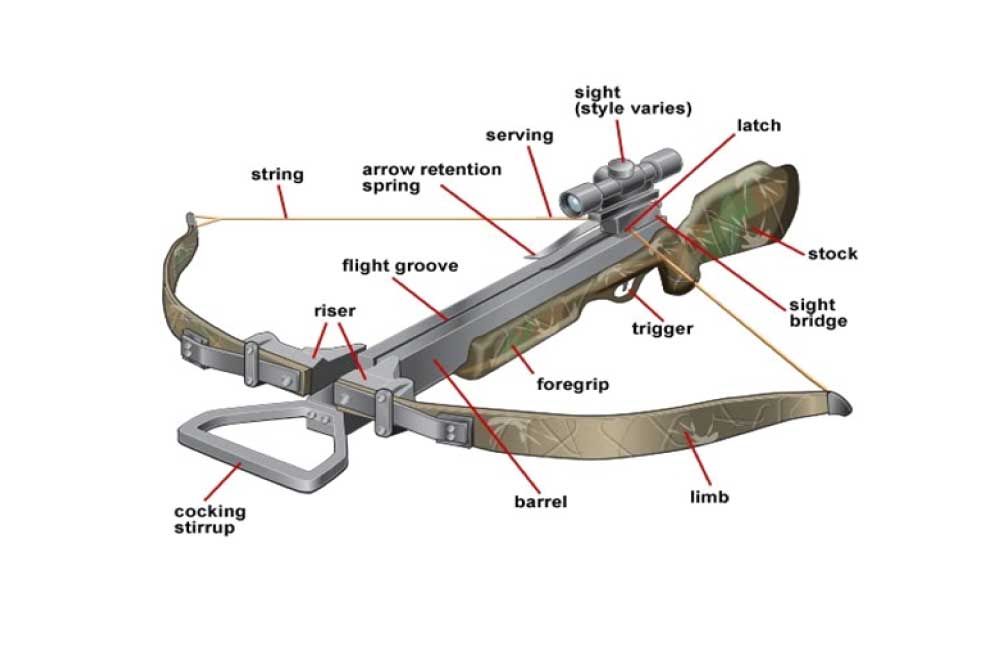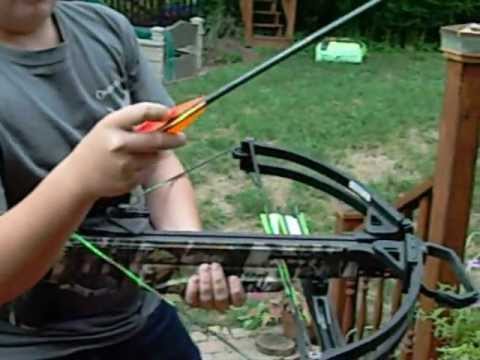Welcome to our comprehensive guide on how to use a crossbow effectively and safely. Whether you’re a seasoned hunter looking to refine your shooting skills or a beginner eager to explore the world of archery and hunting, this blog is your go-to resource. Crossbows have a rich history dating back centuries and have evolved into powerful and precise weapons. In this blog, we will cover everything from the basics of crossbow anatomy and maintenance to advanced shooting techniques and safety tips. By the time you finish reading, you’ll have the knowledge and confidence to handle a crossbow with expertise, ensuring a successful and enjoyable shooting experience. Let’s embark on this exciting journey into the world of crossbowmanship!
What’s a crossbow?

You must be aware of a crossbow but let’s discuss some details of the weapon that you are about to use. A crossbow is a traditional weapon that consists of a bow and some arrows.
The bow in a crossbow is attached directly to a stock which enables the crossbow to remain loaded even when it is not in use. This saves time and allows you to quickly fire an arrow as soon as you spot your target or game.
A lever is attached with the stock of the crossbow which helps you load your weapon. When you release the lever, it immediately fires an arrow at the target. The modern-day crossbow not only has amazing accuracy and a long firing range but they are also incredibly easy to operate.
Common Features of a Crossbow
A common crossbow has the following parts:

Stirrup
It is a metal frame which is located towards the crossbow’s front end. You need to put your foot in it to keep the crossbow in place while cocking.
Stock
It is basically the body of the whole crossbow. All the parts are attached to it. The front end of the stock is called the foregrip. This is the part which you hold with your hand. The rear end is called the buttstock. This is the part which rests against your shoulder.
Limbs
They are responsible for providing power to the bow. They do this by flexing and storing energy which is used to propel the arrow or the bolt. Compound crossbows have cams which are like a pulley systema at the tip of the limbs. Recurve crossbows consist of curved limbs.
Bowstring
It holds together both limbs of the crossbow. It is also responsible for transferring the bow’s energy into the bolt.
Rail
It is the top end of the foregrip. The arrow sits on the rail and the bowstring slides across it.
Trigger
The trigger releases the latch which is holding onto the bowstring. A safety is attached to the trigger in order to prevent misfires.
Bolts
These are basically crossbow arrows which are made of aluminum or carbon fiber. They are manufactured specifically for crossbows and are also slightly shorter than common arrows.
You cannot use just any kind of bolts with a crossbow. Make sure to check the manufacturer recommended weight, length, fletching requirement and nock type for your specific crossbow mentioned in the crossbow instruction or user manual and use only that for the best accuracy.
Cocking aids
Cocking becomes much easier with a cocking aid. A cocking aid helps increase mechanical advantage by hooking onto the string. You can learn how to use it from the staff of the store where you buy your crossbow.
How Does Crossbow Works? – Complete A Step by Step Guide on Using a Crossbow
Now that we have educated you well about the background and features of a crossbow, we feel that you are ready to step into the field and finally put your hands on one. Make sure to properly read all the information written above before using a crossbow otherwise you will not be able to understand the following instructions.
Follow these simple steps in order to safely use a crossbow.
1. Cocking the crossbow

This is the first and most important step as it sets the course for your shot and helps align. If this step is not completed properly, your shot will be quite inaccurate and will definitely miss the target. Now the question is: How to pull back a crossbow? You can pull back a crossbow by using one of the following two ways:
Manual
Put your foot inside the stirrup and then gently pull the string back until it is cocked. Make sure that the string is stretched evenly across both ends of the barrel. Most crossbows have quite heavy draw weights so this might be difficult at first but will get easier with time. To make the process easier, you can use a rope cocking tool.
Crank-operated cocking
Cocking using a crank-operated cocking tool is easier but takes a bit longer. It is basically a winch. Sometimes cranks come with the crossbow but if not then you will have to get it separately. To use it, just keep turning the winch until the bowstring is cocked and locked in place. After that you can put the crank back into its holder or designated place.
2. Loading of the crossbow

Now that you have properly cocked the crossbow, it will be quite easy for you to load it. All you have to do now is to place a bolt into the crossbow’s barrel. Now align the arrow’s cock vane with the barrel channel. Finally, nock the bolt securely in position.
3. Aim Towards your Target

Aiming the crossbow is not as simple as it seems. You cannot just do it with your naked eye. You need to do it using a scope because the target is usually quite far away. If your shot is not quite accurate, adjust the scope to get a better shot the next time.
You can also use a sight pin arrangement instead of a scope. Make sure that the path of your arrow is not obstructed by anything. Also, there shouldn’t be anything in the way of the limbs of your crossbow. Do not put your thumb on the crossbow’s forearm because this could result in serious injury.
4. Shoot the bolt

Now that everything is ready and in place, you can finally pull the trigger and shoot the bolt. Disengage the safety of the trigger right before you pull it. You will hear a loud popping sound as soon as you release the trigger and your bolt will be shot towards your target.
5. Follow-through

Focus on the target when you shoot the bolt and keep your focus on it if you intend to keep shooting. After the shot, gently lower the crossbow. Now you can get ready for firing the next bolt.
Practice makes A Man Perfect
Do not assume that you will master the art of shooting a bolt the first time you hold a crossbow. You will have to practice and practice again until you can get a perfect shot. Try to practice in maintained environments before you take your crossbow out in the open.
It is best that you go with a professional for the first few sessions of shooting. Make sure you properly read this article and watch lots of videos before setting foot in the field. A professional will help you get your stance right and get a good shot.
Difference Between Traditional Bows and Crossbows
- A crossbow is quite different from a traditional bow and packs in many more features. Following are the differences between a traditional bow and a crossbow:
- A crossbow’s firing range is much longer than that of a traditional bow. A traditional bow’s firing range is about 280 yards while that of a crossbow is 380 yards.
- A traditional ow fires arrows faster than a crossbow. You can fire about 5-7 arrows in the same time that it takes to load one arrow into the crossbow.
- Crossbows are easier to use. A traditional bow requires a lot of strength to operate. However, crossbow’s can be used by almost anyone.
- In a traditional bow you have to pull and hold the arrow in place yourself while you adjust your aim whereas in a crossbow, a mechanical latch holds the arrow in place.
- A crossbow has a much better accuracy as compared to a traditional bow.
- While using a standard bow, you keep one hand on the bowstring and one on the grip whereas a crossbow is used from a shouldered position where the shoulders and both hands support the crossbow. This gives you a much better aim.
We hope that our tutorial on how to use a crossbow was useful for you and helped you understand the whole procedure carefully. Follow all the steps one by one and you will be able to master the skill soon enough. If you have any more questions, you can send them to us and we would love to help out with them. Until then, happy shooting and don’t forget to stay safe!
